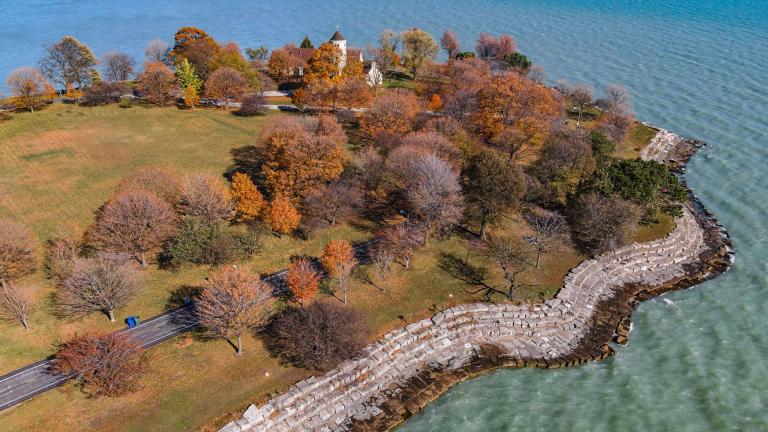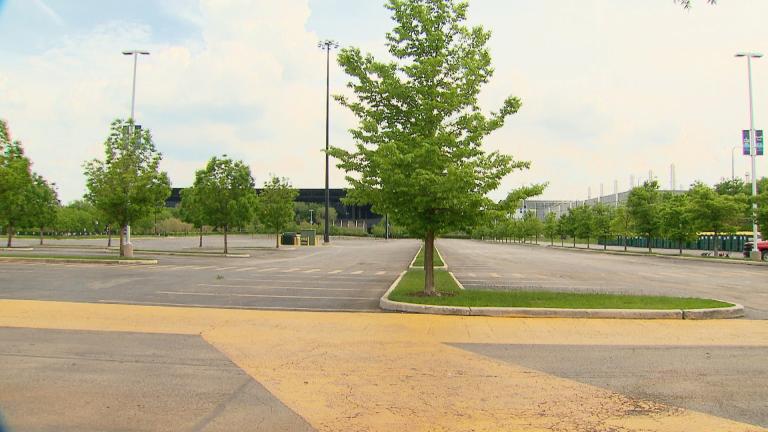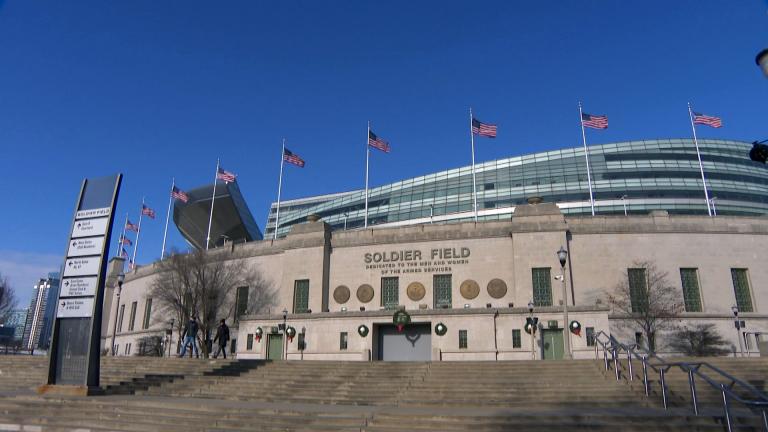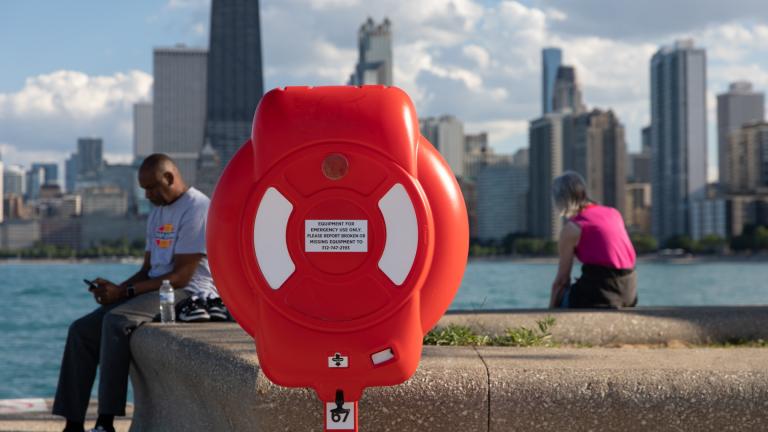Video: Joel Brammeier of the Alliance for the Great Lakes and Rep. Kam Buckner join “Chicago Tonight” to discuss rising water levels and more. (Produced by Acacia Hernandez)
With $3 million in funding — half coming from Chicago and half from the federal government — the U.S. Army Corps of Engineers is about to embark on its first comprehensive study of the city’s lakefront in more than 25 years.
Mayor Lori Lightfoot and members of Illinois’ congressional delegation, including Sen. Dick Durbin, gathered at a press conference Thursday to celebrate the long-awaited news, having lobbied for the federal dollars since 2020, when the lakefront took a pounding during a winter storm. The allocation was announced last week as part of the Corps’ 2022 civil works budget, made possible by the recently passed Infrastructure Investment and Jobs Act.
Repairing storm damage is one thing, Lightfoot said, but the battering suffered by the shoreline also made it clear long-term solutions in the face of climate change were needed, given the prospect of an increase in the number and intensity of weather events.
Chicago’s identity is bound to its lakefront location — “It is the thing that sets us apart from every other city,” Lightfoot said. It will be up to the Army Corps to devise a balance between protecting people and property from surging water while at the same time preserving the city’s relationship with the lake.
The Corps, in partnership with entities including the Chicago Park District, has done this before, having wrapped up a previous shoreline project less than a decade ago. From Montrose Avenue to 43rd Street, the Corps removed crumbling limestone structures that had long since ceased to prevent flooding or erosion and replaced them with more substantial, tiered concrete revetments. (The city and Park District were given oversight of projects along other portions of the lakefront, mostly south of 43rd Street.)
The Corps’ defenses largely held during the 2020 winter storm and have proven to be resilient, said Steve Fischer, deputy district engineer and chief of planning for the Army Corp’s Chicago district.
It was unprotected areas that bore the brunt of the lake’s powerful waves, he said, and that will be the focus of the new study, which will encompass stretches from Juneway Terrace in Rogers Park down to the Eugene Sawyer Water Purification Plant in South Shore.
Greater attention to the south lakefront is long past due, said U.S. Rep. Bobby Rush, whose district includes a sliver of the shoreline.
“There is erosion at 67th Street, at 57th Street, at 47th Street,” said Rush, who recently announced his intention to retire at the end of his current term. “Our lakefront doesn’t end at Roosevelt Road.”
At least one potential battleground is likely to be Promontory Point, which juts into the lake at roughly 55th Street. Residents have long opposed any plans to swap out the existing limestone barrier for less natural options.
Asked about Promontory Point, Fischer said the shoreline study hadn’t even begun, so he couldn’t speculate on what the Corps might propose or recommend.
Lightfoot said she was prepared to field plenty of feedback from the Point's “very engaged local community.”
The survey is expected to take three years, Fischer said, at which point the findings will be presented to Congress with a request for funding, likely to run into the hundreds of millions of dollars.
Note: This story was originally published Jan. 27. It has been updated to include our “Chicago Tonight” discussion.
Contact Patty Wetli: @pattywetli | (773) 509-5623 | [email protected]






